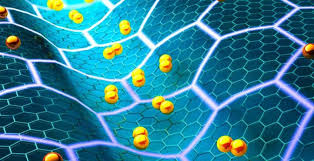
Breaking News
 The Silver Price Signal Everyone Is Missing | Mike Maloney & Alan Hibbard
The Silver Price Signal Everyone Is Missing | Mike Maloney & Alan Hibbard
 House Democrat introduces impeachment articles against RFK Jr
House Democrat introduces impeachment articles against RFK Jr
 Home sellers are giving up at 'unusually high rate,' says new Realtor report
Home sellers are giving up at 'unusually high rate,' says new Realtor report
 Gen X is ungovernable. Forged by childhood experiences, freedom was intergrated into our DNA.
Gen X is ungovernable. Forged by childhood experiences, freedom was intergrated into our DNA.
Top Tech News
 Build a Greenhouse HEATER that Lasts 10-15 DAYS!
Build a Greenhouse HEATER that Lasts 10-15 DAYS!
 Look at the genius idea he came up with using this tank that nobody wanted
Look at the genius idea he came up with using this tank that nobody wanted
 Latest Comet 3I Atlas Anomolies Like the Impossible 600,000 Mile Long Sunward Tail
Latest Comet 3I Atlas Anomolies Like the Impossible 600,000 Mile Long Sunward Tail
 Tesla Just Opened Its Biggest Supercharger Station Ever--And It's Powered By Solar And Batteries
Tesla Just Opened Its Biggest Supercharger Station Ever--And It's Powered By Solar And Batteries
 Your body already knows how to regrow limbs. We just haven't figured out how to turn it on yet.
Your body already knows how to regrow limbs. We just haven't figured out how to turn it on yet.
 We've wiretapped the gut-brain hotline to decode signals driving disease
We've wiretapped the gut-brain hotline to decode signals driving disease
 3D-printable concrete alternative hardens in three days, not four weeks
3D-printable concrete alternative hardens in three days, not four weeks
 Could satellite-beaming planes and airships make SpaceX's Starlink obsolete?
Could satellite-beaming planes and airships make SpaceX's Starlink obsolete?
Tuning Graphene Superconductivity

Above – Applying pressure to twisted bilayer graphene transforms the material from a metal to a superconductor. Image: Ella Maru Studio
"Our work demonstrates new ways to induce superconductivity in twisted bilayer graphene, in particular, achieved by applying pressure," said Cory Dean, assistant professor of physics at Columbia and the study's principal investigator. "It also provides critical first confirmation of last year's MIT results—that bilayer graphene can exhibit electronic properties when twisted at an angle—and furthers our understanding of the system, which is extremely important for this new field of research."
In March 2018 researchers at the Massachusetts Institute of Technology reported a groundbreaking discovery that two graphene layers can conduct electricity without resistance when the twist angle between them is 1.1 degrees, referred to as the "magic angle."

 First totally synthetic human brain model has been realized
First totally synthetic human brain model has been realized Mach-23 potato gun to shoot satellites into space
Mach-23 potato gun to shoot satellites into space

